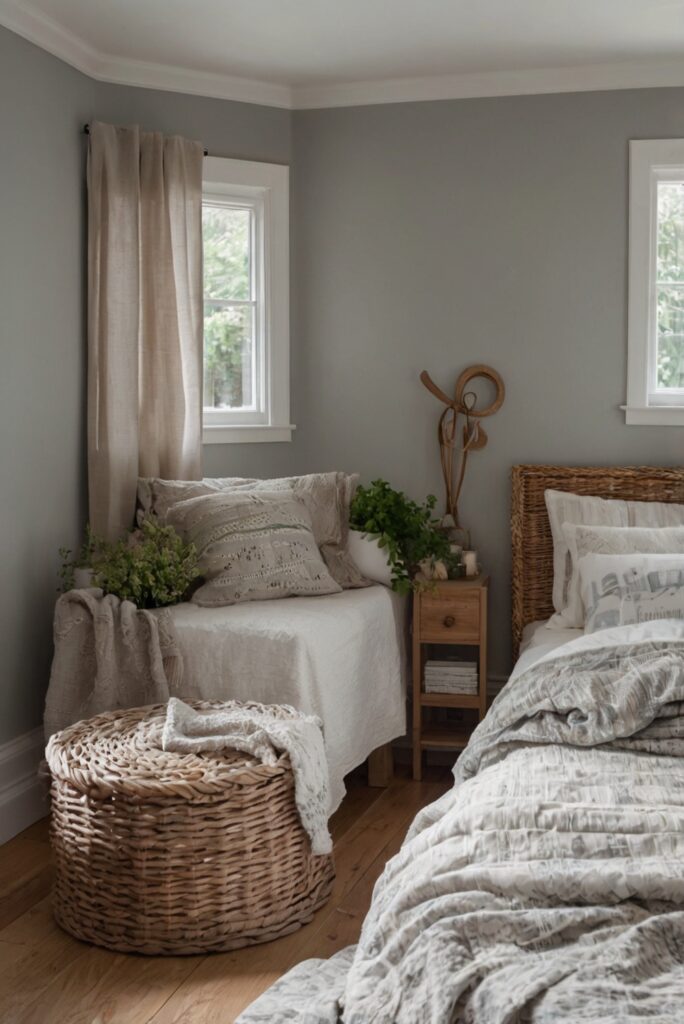Discover the ideal bedding materials for allergy sufferers in this daily routine guide for interior designers. Explore how to create allergy-friendly spaces with the best materials.
**
What are the Best Bedding Materials for Allergy Sufferers?
**
**
Hypoallergenic bedding materials such as bamboo, cotton, or microfiber are ideal for allergy sufferers. They are soft, breathable, and resistant to dust mites and allergens. Pair these materials with dust mite-proof covers for pillows and mattresses to further reduce allergen exposure. Regularly washing bedding in hot water and vacuuming the bedroom can also help minimize allergens. Consider using air purifiers or humidifiers to maintain clean indoor air quality and reduce allergy symptoms. Creating a clean, allergen-free sleeping environment is essential for allergy sufferers to have a restful night’s sleep.
**
What are the Best Bedding Materials for Allergy Sufferers?
When it comes to choosing bedding materials for allergy sufferers, it is crucial to select options that are hypoallergenic, resistant to dust mites, and easy to clean. Here are some of the best bedding materials that can help alleviate allergy symptoms:
Cotton:
Cotton is a popular choice for bedding material for allergy sufferers due to its natural hypoallergenic properties. It is breathable, soft, and easy to wash, making it an ideal option for those with allergies. Cotton bedding can help reduce the accumulation of dust mites and other allergens, providing a comfortable and allergen-free sleep environment.
Bamboo:
Bamboo bedding is another excellent choice for allergy sufferers. Bamboo fibers are naturally hypoallergenic, antimicrobial, and resistant to dust mites, making them a great option for those with allergies. Bamboo bedding is also known for its softness, durability, and moisture-wicking properties, helping to regulate body temperature and keep allergens at bay.
Microfiber:
Microfiber bedding is a synthetic material that is often hypoallergenic and resistant to dust mites. It is soft, lightweight, and easy to care for, making it a practical choice for allergy sufferers. Microfiber bedding is also affordable and comes in a variety of colors and patterns, allowing you to find the perfect option that suits your style and preferences.
Conclusion:
Choosing the right bedding materials can make a significant difference in managing allergy symptoms and improving sleep quality for allergy sufferers. By opting for hypoallergenic, dust mite-resistant, and easy-to-clean options like cotton, bamboo, and microfiber bedding, you can create a comfortable and allergen-free sleep environment that promotes better rest and overall well-being.
What are the Best Bedding Materials for Allergy Sufferers?
Cotton: Cotton is a natural material that is hypoallergenic and breathable, making it an excellent choice for allergy sufferers. It is gentle on the skin and helps regulate body temperature, reducing the risk of triggering allergies.
Bamboo: Bamboo bedding is another great option for allergy sufferers as it is naturally hypoallergenic, antimicrobial, and moisture-wicking. Bamboo fabric is soft, silky, and ideal for those with sensitive skin or allergies.
Microfiber: Microfiber bedding is a synthetic material that is tightly woven, making it resistant to dust mites and allergens. It is also soft, durable, and easy to care for, making it a popular choice for allergy sufferers.
What Other Factors Should Allergy Sufferers Consider When Choosing Bedding Materials?
Hypoallergenic: Look for bedding labeled as hypoallergenic to minimize the risk of allergens triggering reactions. These materials are designed to repel dust mites, mold, and other common allergens.
Thread Count: Opt for bedding with a high thread count, as this indicates a tighter weave that can help prevent allergens from penetrating the fabric. A thread count of 300 or higher is recommended for allergy sufferers.

